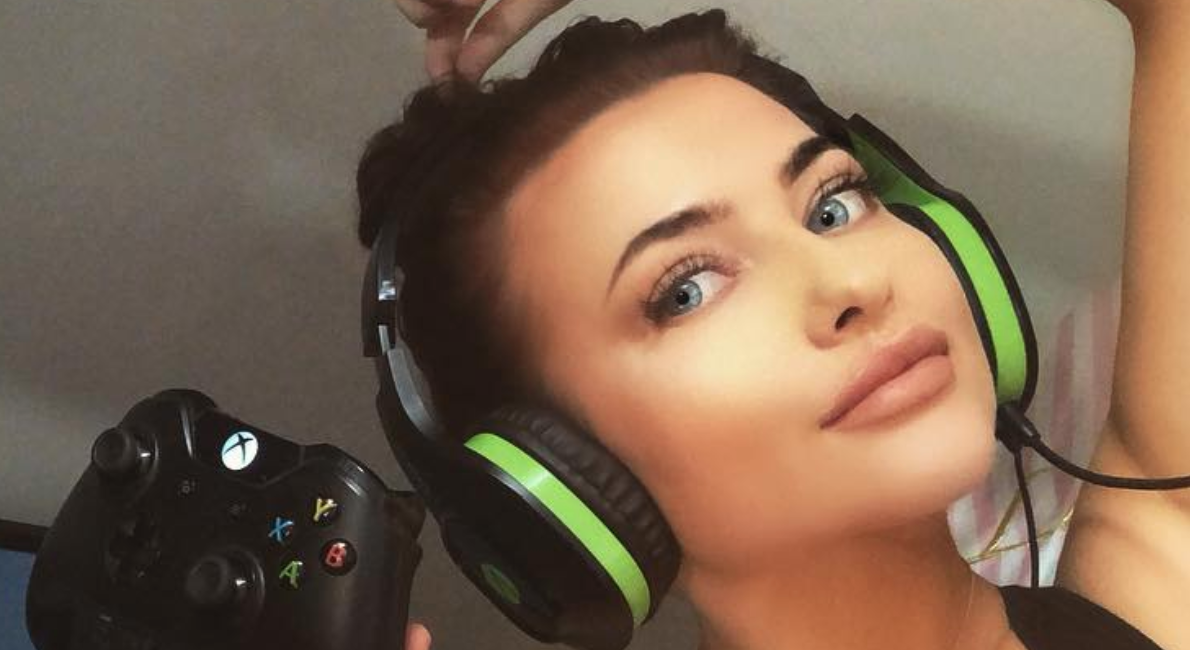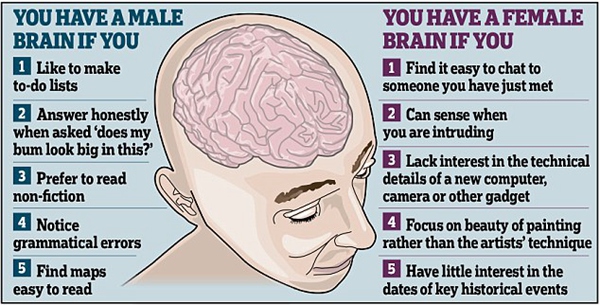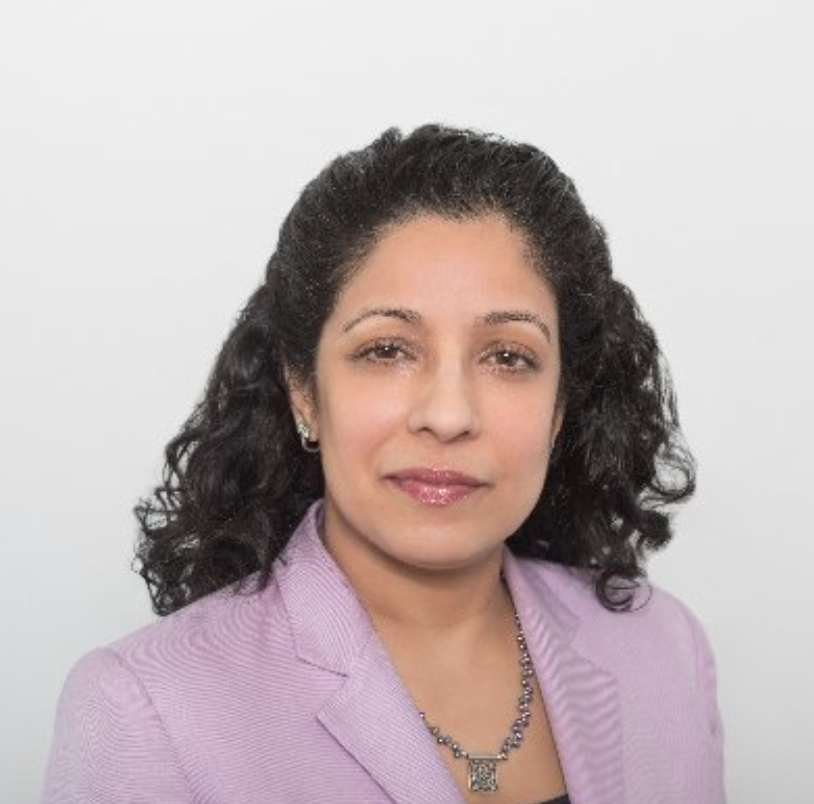Here’s the thing about female gamers: there really aren’t any.
The statistics that say that there are female gamers include cellphone games, and The Sims.
Kotaku did the whole “everything is black people now” thing with their “Gamers of the Year 2020,” and it was two fat black women who play The Sims, and a fat black woman who plays Animal Crossing and says she’s making an RPG that is only made by colored people (it looks like a fraud and embezzlement scheme). They also included Hasan Piker, who doesn’t even play games, but they said he’s a gamer because he streams on Twitch.
Obviously, that is just Kotaku in action. But it does speak to the larger issue, broadly: women are not good at normal video games, because of the way their brains are wired. Moreover, they are not interested in video games, for the same reason.
There are of course “gamer girls” on Twitch, but that is just basically OnlyFans lite, where these girls wear skimpy clothes and giggle as they die in games while raking in tips.
They also engage in various forms of fraud, where they pretend to be playing a game while some man is playing the game.
Professional gaming is by its nature meritocratic, as all sports are. It’s very confusing when these people come out and complain about, for example, the fact that all 100 finalists in a Fortnite competition in 2019 were male.
It’s unclear what they are trying to accomplish by complaining about this. You could force some kind of affirmative action into gaming, but the women would obviously just lose. It would be humiliating for whatever women you put in this position, because they would lose quickly.
Women simply do not have the fast twitch capacity for shooters, and they do not have the ability to play strategy games for the same neurobiological reasons they can’t play chess.
A 2008 Stanford study showed that women’s brains don’t even release dopamine when playing competitive games. So they literally have no interest in the first place, and the only reason that “women in gaming” is a topic is because women are threatened by the idea that men are doing something that doesn’t involve them.
Now, there is a push to put “equity” in esports. I don’t see how this is possible without bringing in trannies. If you wanted to have professional women’s esports, you would have to have a separate league, as with physical sports.
AP:
Colleges and universities rushing to invest in the booming arena of varsity esports are overwhelmingly committing opportunities and scholarships to male players, according to data collected by The Associated Press.
Male gamers held 90.4% of roster spots and received 88.5% of scholarship funds in a sample of 27 public American schools surveyed by the AP during this school year. The glaring gender disparity exists even though 41% of U.S. gamers are female, according to the Entertainment Software Association, and in a realm where — unlike traditional sports — there are no physical barriers separating male and female competitors.
There are physical barriers. Neurobiology is a part of biology.
This is not some black hole mystery. Both genetics and hormones affect the functioning of the brain, and you can very easily tell the difference between a male and female brain on a brain scan.
This isn’t controversial.
The other big lie in that lede is the implication that women make up 41% of players of games that are played in esports. As noted above: women play cellphone games like Candy Crush. They play The Sims. They play Farmville.
It is just total fake news to frame these two points like this.
Honestly, I don’t know how it is only 88.5% of gaming scholarships, and I have to assume that the other 11.5% are trannies.
Framing this as a sexist conspiracy is as insane as the coronavirus lockdown, George Floyd being murdered, war on Syria to protect America interests, the 2020 election, or any other of the ridiculous hoaxes that are ongoing.
“It’s tremendously sad and tremendously not surprising,” said Grace Collins, an expert on gaming, education and gender.
The AP requested roster and scholarship data from 56 public U.S. schools identified among the 192 participants in the National Association of Collegiate Esports, relying largely on public records requests.
Several schools responded that although their programs compete at the varsity level, they had not been sanctioned varsity status by the school. Their roster data was often incomplete, and those programs were held out of the sample. A handful of other schools either denied the AP’s request or did not respond to repeated messages.
That’s not surprising.
What are they supposed to say?
This is no different than calling up the NFL and asking them why they don’t have female linebackers, while implying it’s a sexist conspiracy.
The AP’s data set covers only a small sample of the landscape. But the overwhelming results confirm what esports coaches, players and experts have identified on their own as a problem since the first varsity program launched in 2014:
As esports are carving out their place on college campuses — and doing so without a central governing body, such as the NCAA — little is being done to ensure resources are spread equally along gender lines.
“The way that these programs have been built out, the games that they select to play, the esports models that they’re looking at, the people that they are staffing, all are replicating an unequal system,” said Collins, CEO of Liminal Esports and a former liaison at the U.S. Department of Education focused on educational technology.
“So often it seems like to me, they’re trying to make another football for universities, and taking with it all of the baggage that is completely unnecessary to pull along with esports.”
“The games they select to play” is an interesting admission.
Obviously, the games they select to play are ones that are highly competitive and generally popular among the population.
The games that women play are not competitive. You could figure out a way to measure who builds the best farm in Farmville, I guess. But no one would be interested in that. Even other women would not be interested. They would rather play it themselves.
What’s more, this is not even a big deal. You probably didn’t even know esports scholarships were a thing. I did know that, but only because I follow this stuff. But it’s still really small in terms of numbers, and there are now big payouts. It’s just kind of a fun thing some colleges are doing to add a bit of spice to things.
But of course, women are the Fun Police. If this “equity in gaming scholarships” becomes some big issue, it will just mean the whole thing has to be shut down.
Esports’ impact on campuses remains relatively small. The average roster in the AP’s sample included 30 players, but programs ranged from six to 83 gamers. Roughly a quarter of those players received scholarships, and the average payout was around $1,910.
Participation is sure to rise, though, especially after interest in gaming accelerated globally during the coronavirus pandemic. As people spent unprecedented amounts of time at home, the total esports audience swelled to 495 million last year, according to market research company Newzoo — a nearly 12% bump. That helped the competitive gaming industry surpass $1 billion in revenue for the first time.
While plenty of women play video games, they remain woefully underrepresented in many esports. There are several reasons for that, including a culture of toxicity and harassment perpetuated by some male gamers who favor the most popular games, like “League of Legends.”
Ah, yes. The ever-present looming threat of “internet violence against women.”
This is just a lie. It’s total nonsense.
The only seriously competitive games I’ve ever played significantly and gotten ranked in ladders are Warcraft III and StarCraft II. I would play all kinds of custom games on there, and sometimes a woman would show up, and everyone was nice to her, and would usually try to let her win, or offer to help her, or whatever. I’ve seen people team kill because there was a girl on the other team who turned on voice chat and boys/men wanted to help her win.
If there is “toxicity and harassment,” it is just the standard banter that men engage in. When women enter a male space, where they do not belong, they interpret banter as aggression against them personally.
It’s all just so tiresome.
Why can’t men have video games?
The AP is pulling the Title IX card.
In traditional sports, Title IX has helped ensure athletic departments devote roughly equal resources to male and female students. The law mandates equitable opportunities to participate in sports for men and women, and it requires that scholarships be offered proportionally to participation. It also states that facilities, equipment and other provisions be roughly equal.
Many schools, intentionally or not, have sidestepped those restrictions by housing their esports program outside of the athletic department. Many of the esports scholarships reported to the AP were academic or merit-based funds.
Still, Title IX — which broadly prohibits gender discrimination in any educational program that receives federal funding — could be a tool for addressing esports’ inequity issue, according to Neena Chaudry, general counsel and senior advisor at the National Women’s Law Center.
Of course.
The eternal nasty brown bitch shows up to destroy your video games.
So use Title IX and put girls on the PUBG team.
Please, do it.
I want to watch the streams.
But of course, they’re not going to do that. Instead, they’re going to go in and try to “change the culture of toxicity.”
“If schools are going to be adding esports — and this is true regardless of whether it’s in the athletic program or not — then they need to address barriers such as harassment and other forms of discrimination that women may be facing in esports,” Chaudry said. “Just as they would in any other sport or in the education program in general.”
Collins — who launched the first all-girls varsity esports high school team at a private girls school near Cleveland in 2018 — believes one way to boost female participation would be to expand the selection of games. They compare it to a movie club that only watches “Die Hard” movies and then wonders why only boys or men show up.
“That’s not to say that girls on your campus don’t like to watch movies,” Collins said. “It’s just saying they don’t like to watch ‘Die Hard.’”
What is this?
So women are exactly equal or they’re not?
If they’re exactly equal, then put them on the Warzone team.
“League of Legends” is a staple of collegiate esports programs, as are male-dominated “Madden” and “Call of Duty.” “ Overwatch ” — a game whose cover character is a gay woman — has a slightly better ratio of women to men and is also popular. Collins would like to see schools try games like “Just Dance,” “Mario Kart” or something from the fighting genre. Girls and women are also more likely to play mobile games.
HAHAHAHAHA!
There it is!
Mobile games!
We need a varsity Candy Crush team!
Then, finally, the investigation found a coach in Idaho who is actively recruiting women – and attempting to get rid of banter, because it hurts women’s feelings.
Boise State was among the more equal schools in the AP’s survey, with 16 male players, five female players and three who identified as nonbinary. Esports coach Doc Haskell has been intentional about diversity — “These teams need to look like us, like our campus community,” he said — and among the pivotal steps he’s taken has been a focus on the way players communicate.
While scouting potential recruits, Haskell believes he places a higher priority relative to other programs on intangible qualities — teamwork in particular — than a player’s current ratings. Once players are in the program, he closely monitors the language they use in practice and competition, looking for teachable moments that foster inclusion.
“There are things that would be, in previous generations, considered ‘locker room talk,’” Haskell said. “The grand truth is that we can hope to avoid these things. We can teach around these things.”
Imagine playing a Battle Royale game without banter.
I don’t play Battle Royale, but I watch a fair amount of it, and the single most entertaining aspect is the banter.
They found a coach who did do a 50-50 sex ratio – Weissman!
Surprise!
The only school in the AP’s sample with a 50-50 ratio of men and women was at the University of South Carolina-Sumter, which has eight male and eight female players. The program was the first in the state when it launched six years ago and initially had an all-male roster, but it picked up a couple of women gamers when it added “Overwatch” in its second year. That little bit of representation slowly built on itself.
“I didn’t do anything special, like, ‘Oh, I need to make sure I meet this quota or anything specific,’” coach Kris Weissman said. “But I made sure that we had an open and appealing program to everyone and anyone.”
So, there you have it.
The vaginal assault on gaming has entered a new front.
This could possibly turn into #Gamergate2.
Maybe we can get Donald Trump to tweet about it – oh wait. No, I guess not. Maybe we can get him to mention it in his 2022 CPAC speech? (That is actually probably possible.)
Imagine that this investigation was published by the Associated Press.
This is extremely unethical gaming journalism.









